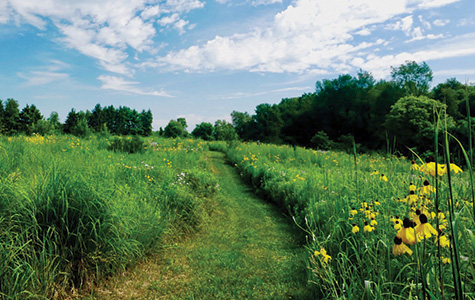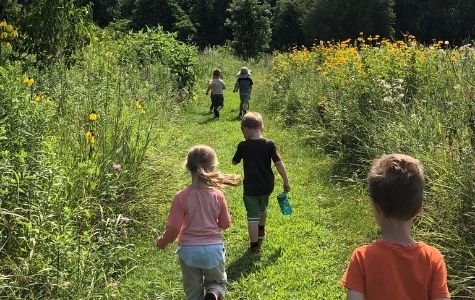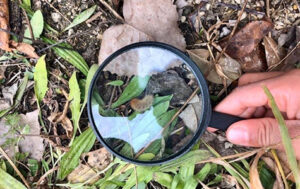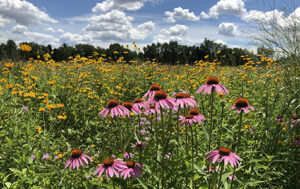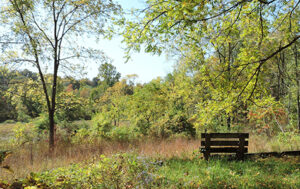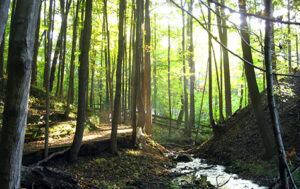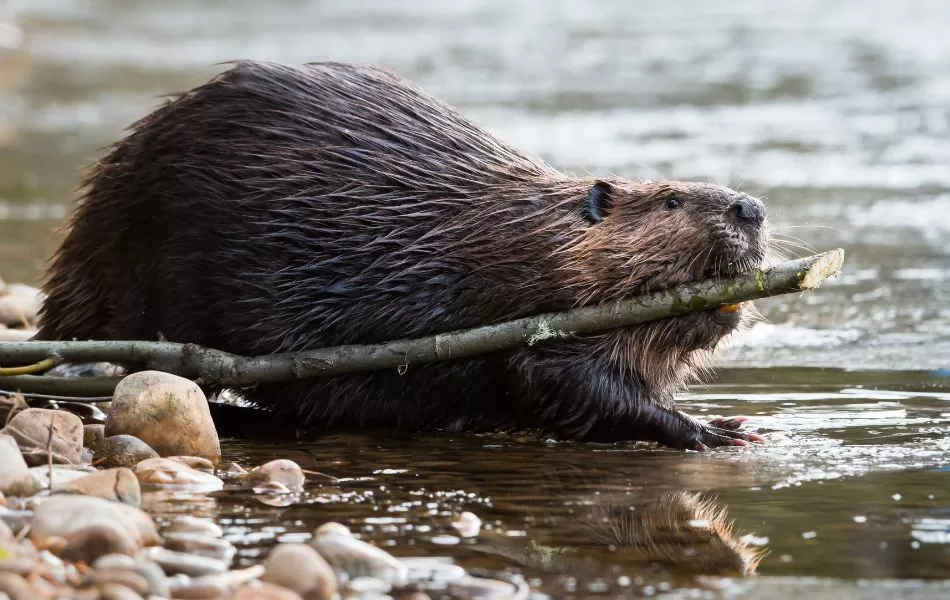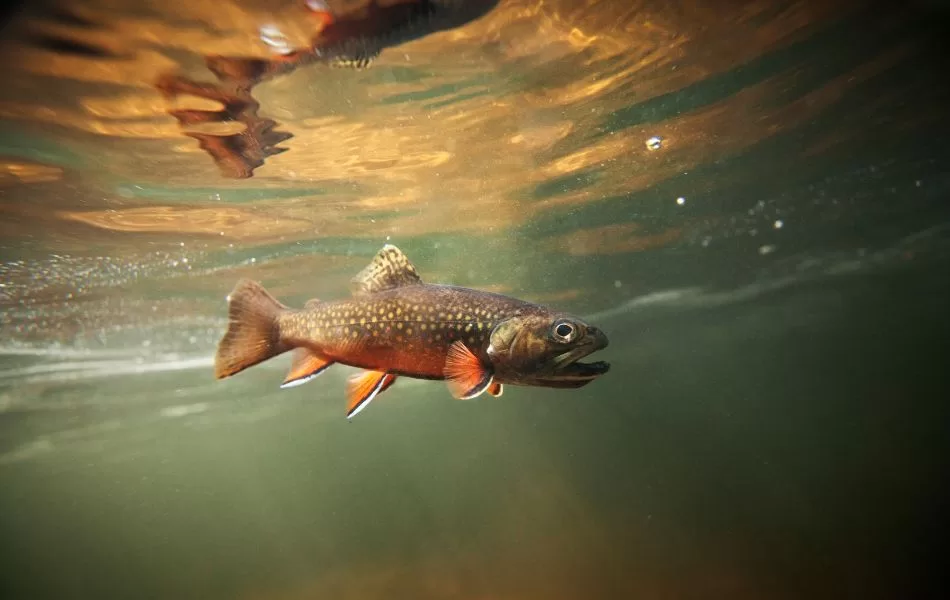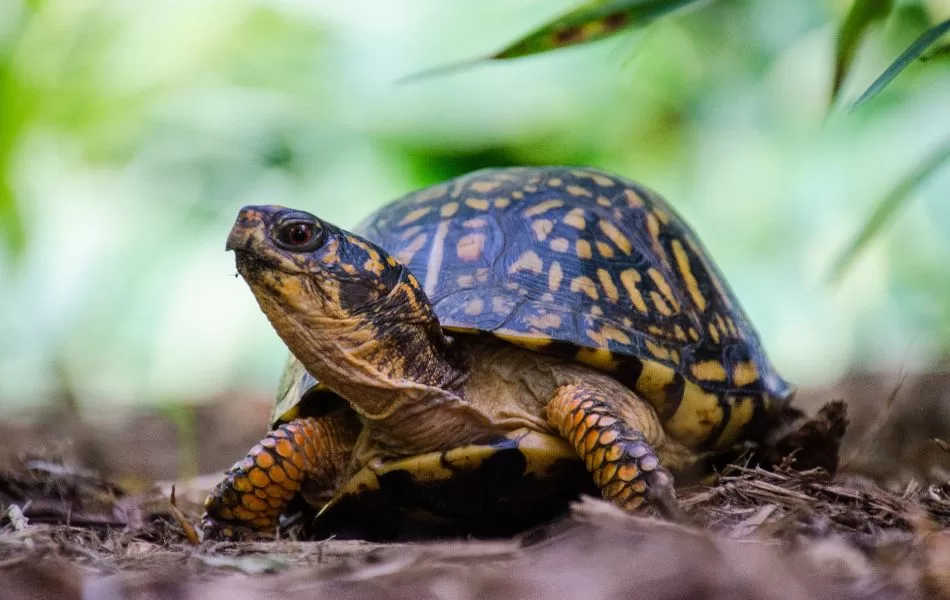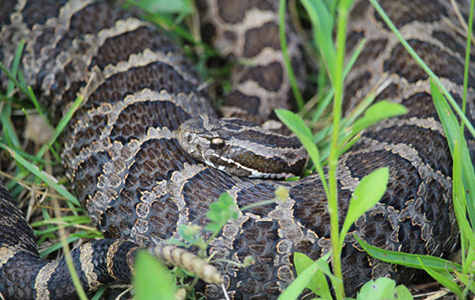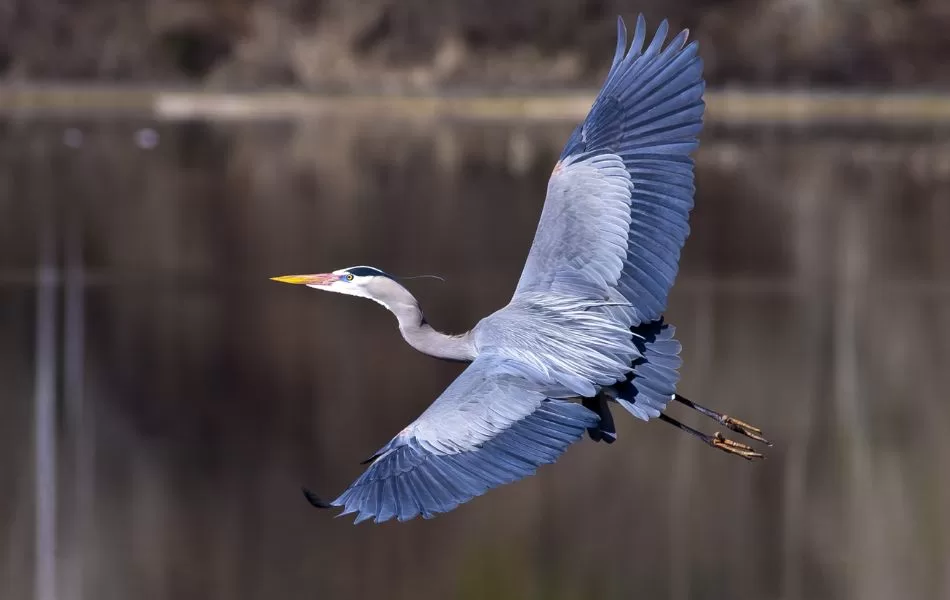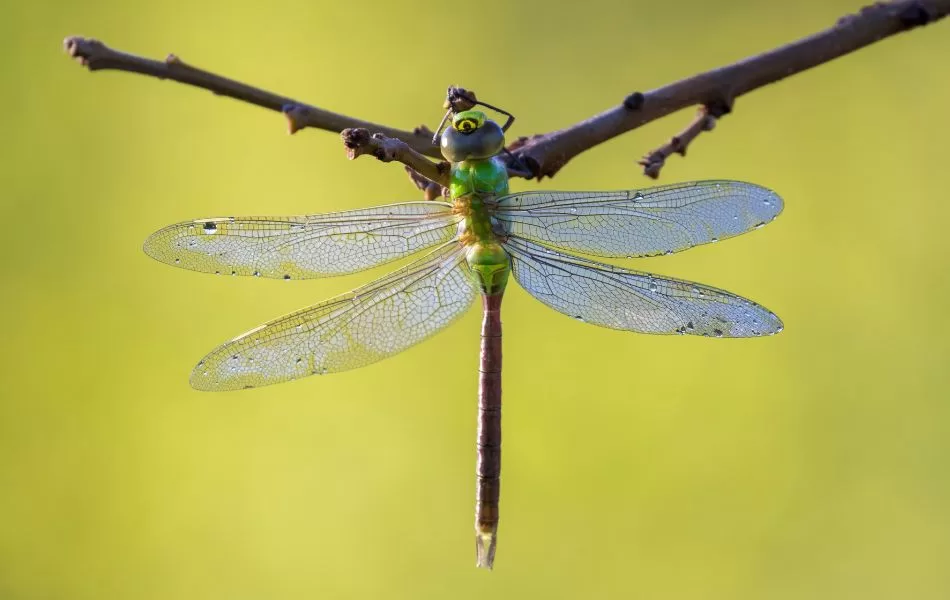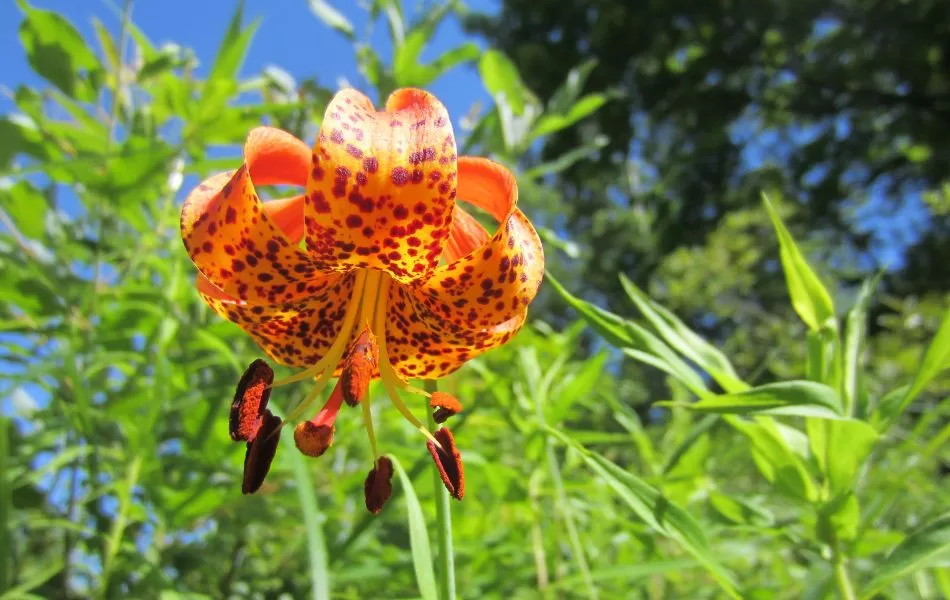Welcome to the Habitat Haven Trail!
This beautiful, 0.6 mile loop takes hikers through some of the most outstanding and beautiful habitats in southwest Michigan! On your journey, you’ll explore pond, fen, stream, and forest habitats with a spur trail into the middle of the fen.
The trail begins right under the bridge to the Visitor Center. Other than three sections of boardwalk, the trail is gravel, making it friendlier to strollers and wheelchairs. The section leading from the building to the loop is the steepest part. Stop and visit with the birds in the outdoor mews at the trailhead, then follow the outflow from KNC’s geothermal heating and cooling system down to the fen.
Once on the loop, the first stop is the overlook at the East Fen Pond. Look for frogs and turtles in the water and Wood Ducks in the nest box. The trail continues, always near the fen but with enough forest to have spring wildflowers. A spur trail, mostly boardwalk, goes right out into the fen, ending with an overlook at Trout Run Stream. During the summer and fall, the fen is exploding with flowers.
Right after the juncture with the Ridge Run Trail, the trail becomes a bridge over Trout Run Stream. Michigan’s glaciated past makes an appearance; A sunny hillside is actually part of an esker, sediment deposited by a glacial river thousands of years ago. Trout Run Stream briefly parallels this ancient riverbed. After crossing over the stream, the trail continues as a boardwalk through the delicate wet area. The connection with Cooper’s Overlook trail is near the end of the boardwalk and the loop is nearly full circle.
Learn more about the creatures that call this habitat home below, and plan your visit here >

